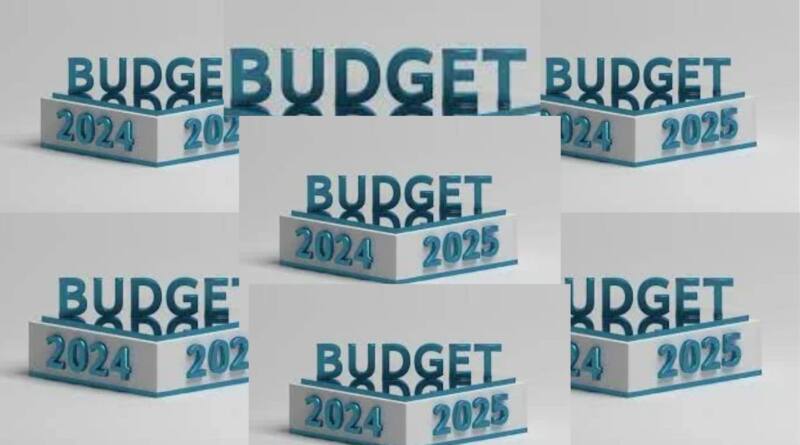Latest Here in Budget 2024–25, The Healthcare Sector:
As India prepares for the Interim Budget 2024–25, the healthcare industry has issued a clear wish list, urging the government to prioritize three key areas: research and development, infrastructure upgrades, and combating noncommunicable diseases (NCDs).
The healthcare industry’s call is consistent with data showing India’s healthcare spending at a modest 1.8% of GDP, well below the global average of 6%. Experts believe that the interim budget presents an opportunity to close this gap by increasing allocations to 2.5% of GDP, as recommended by the NITI Aayog. They said that encouraging private sector participation can speed up infrastructure development while also aligning with the government’s vision of universal healthcare accessibility.
“India’s pharmaceutical industry has set ambitious targets. With a target valuation of $400–450 billion by 2047, accelerating life-science innovation and R&D is critical. Despite projections of $130 billion in pharmaceutical exports by 2030, current R&D spending of 1.2% of GDP is significantly lower than the global average,” said Sudarshan Jain, Secretary General of the Indian Pharmaceutical Alliance. Jain also urged the government to implement “conducive policies,” utilizing tax breaks to realize India’s potential as a pharmaceutical powerhouse.
According to the government’s own data, despite having over 1.3 million doctors and 3 million nurses, India’s healthcare system faces an uneven distribution of human resources. Rural areas remain severely underserved, with a doctor-patient ratio of 1:847, which is significantly higher than the WHO’s recommended 1:1000, according to the union health ministry. This scarcity is exacerbated by skill gaps, high vacancy rates, and unappealing working conditions in rural communities.
While India has over 5 million auxiliary healthcare workers who play an important role in primary care, bridging the gap requires a multifaceted approach. The Ministry of Health and Family Welfare, in collaboration with regulatory bodies such as the Indian Medical Council and the Indian Nursing Council, has advocated for increased healthcare spending, enhanced rural healthcare incentives, and improved healthcare professional training.
“We have a critical shortage of physicians and nurses. “The government should significantly increase budgetary allocations to upgrade healthcare facilities, improve patient safety, and prioritize rural healthcare development,” stated Ameera Shah, Metropolis Healthcare’s Promoter and Managing Director.
The rising burden of noncommunicable diseases (NCDs) poses a further threat to India’s healthcare system. The Indian Council of Medical Research (ICMR) 2020 report estimated 2.45 million deaths from cardiovascular disease in 2019. A study published in The Lancet Regional Health—Americas in October 2023 found a slight upward trend in CVD mortality in India between 2010 and 2020. Furthermore, the International Diabetes Federation’s 2023 Diabetes Atlas projected that India would have approximately 82.1 million adults living with diabetes in 2023, up from 77 million in 2019.
Similar to CVDs, a study published in the Journal of Thoracic Disease in June 2022 suggested that chronic obstructive pulmonary disease (COPD) is becoming more prevalent in India, particularly among rural women. The most recent national cancer registry data available is from 2020, with an estimated 1.32 million new cancer cases diagnosed in India. While specific figures for 2022 and 2023 are not available, trends indicate an overall increase in cancer incidence, driven by factors such as an aging population and improved cancer detection.
Experts believe that Budget 2024 has the potential to be transformative. It could boost innovation, strengthen infrastructure, and prioritize NCD prevention. Dr. Ashutosh Raghuvanshi, MD, CEO of Fortis Healthcare, and President of NATHEALTH, emphasized the urgency, citing data indicating that diabetes and heart disease account for more than 70% of all deaths in India. “The government should adopt a proactive approach and significantly increase funding for public health programs and screening initiatives to focus on early detection and preventative care, aligning with the National Health Mission’s objectives,” said the Minister of Health.
Disclaimer: The WFY website aims to share experiences, opinions, and information on various topics. However, it is important to note that the author of this blog does not possess any professional authority or expertise, especially in subjects related to health, medical advice, or legal matters.
The information provided on this website is based on personal experiences, research, and general knowledge. While we strive to provide accurate and up-to-date information, we cannot guarantee the completeness, reliability, or accuracy of the content. Therefore, any action you take based on the information found on this blog is at your own risk.
The contents of this blog should not be considered a substitute for professional advice or consultation from experts in the respective fields. If you require specific advice or assistance, we strongly recommend consulting with a qualified professional.
The WFY (website) and its author will not be liable for any errors, omissions, or any losses, injuries, or damages arising from the use or reliance on the information presented on this blog. It is your responsibility to verify any information obtained from this blog and to use it at your own discretion.
Please note that the opinions expressed in the articles and comments on this blog are those of the respective authors and do not necessarily reflect the views of the website owner or any associated individuals.
By using this website, you acknowledge and agree to the above disclaimer. If you do not agree with this disclaimer, please refrain from using this website.




